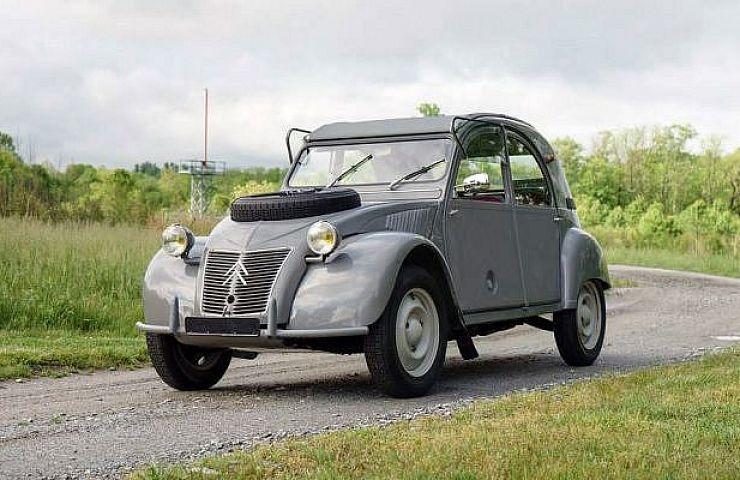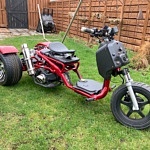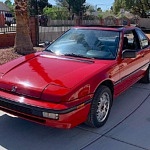Quirky French automaker Citroën may be the only company to try something as outlandish as producing a car with more than one motor. That’s exactly what it did with the 1962 Citroën 2CV Sahara currently offered on eBay for a Buy-It-Now price of $99,500.
The Citroën looks like a standard version of the long-lasting 2CV (1948-1988). It’s also known as “Deux Chevaux” or “Two Horses.” But in fact it’s an ultra-rare four-wheel-drive Sahara model, with not one but two flat-twin motors—one for each axle. Students of history (or cinema buffs who’ve seen The Battle of Algiers) will recall that France once had colonies in North Africa, and the Sahara model was built to do battle with that terrain.
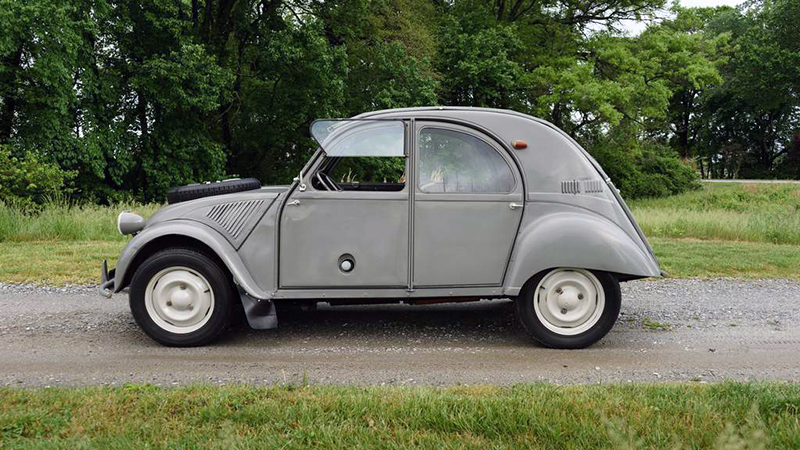
The Sahara, sourced in Holland, is in very original condition, and has had a “sympathetic restoration.”
Of course, carmakers can build four-wheel-drive systems with only one motor, but a 425-cc two-cylinder doesn’t generate sufficient power. Legend has it that a farmer in the Alps, wanting to solve the problem for his personal vehicle, installed the second power plant in the trunk.
After a long gestation period, a production-ready two-engine Sahara was ready in 1958. It was shown to the press at the Paris Motor Show that March. Oil and gas companies going after the rich resource of North Africa’s black gold were identified as the prime target market.
Modifications to the 2CV included a deck lid that had to be left open for cooling, a spare strapped to the customized hood, C-panel louvers, and rear fenders cut down to allow a wider track. There were two transmissions, but they could be shifted with a single lever. Also doubled were the generators, voltage regulators, and gas tanks (filled through the front doors).
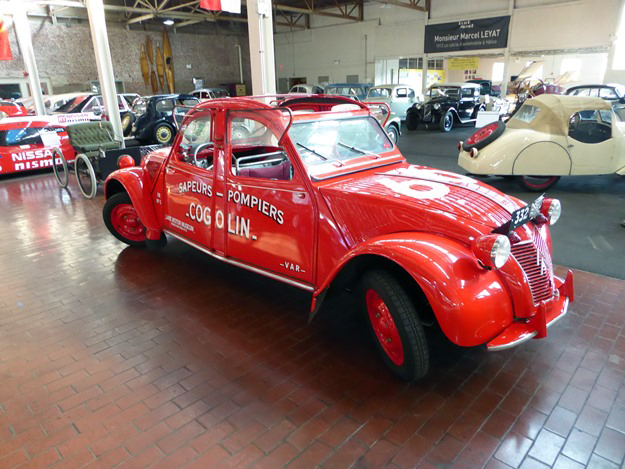
The Lane Motor Museum in Nashville owns this unique “push-me-pull-you” two-engined Citroën, used by a French fire company. (Jim Motavalli photo)
The Lane Motor Museum in Nashville specializes in unusual French cars. It has a 1962 Sahara, and offers this assessment:
On the road, you can drive with both engines running, giving you a top speed of 60 miles per hour. You can also drive on the front engine only but the top speed is reduced to 35 mph. Only 694 Saharas were made and only about 100 are thought to survive.
Oddly enough, the Sahara isn’t the only two-engine 2CV in the Lane collection. There’s also another incredible curiosity—a 1952 2CV with two front ends. Here’s the story: “The fire and rescue service in Cogolin, France, used a Citroën 15-6 (you can find one in our French area) as part of its fleet. One night while on patrol, Colonel Hourcastagné found the narrow mountain road blocked. Unable to turn the car around, he was forced to reverse down the road for several miles aided only by a fireman with a small flashlight to guide the way. This incident gave him the idea for the need of a robust vehicle that could be driven forwards or backwards with the same ease.”
This oddity was in service for 20 years, though according to the Lane is caused “major distraction when passing other motorists on the road.”
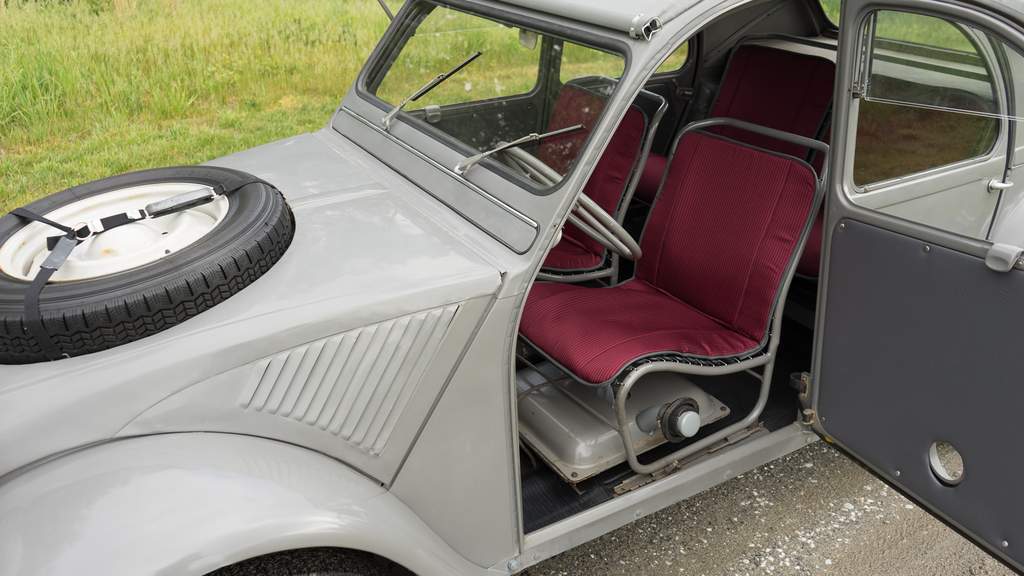
Citroën 2CV interior
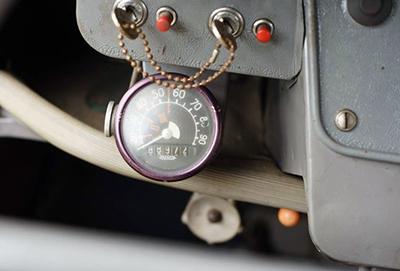
Instrumentation is sparse. Note the double keys for the two starters.
It seems kind of daft for Citroën to build the Sahara when customers could just buy a conventional Jeep, which were plentiful around that time as war surplus. According to Ronan Glon, our own eBay Motors blog contributor, “Initially launched in February of 1961, the 2CV Sahara got off to a very slow start because it was exceptionally expensive even considering it was little more than a niche product. Citroën probably lost money on the Sahara project so no one was shocked when it announced it was not planning on replacing the car.” The price was double that of a standard 2CV.
It probably didn’t help that Algeria got its independence in 1962; the carmaker’s timing wasn’t great.
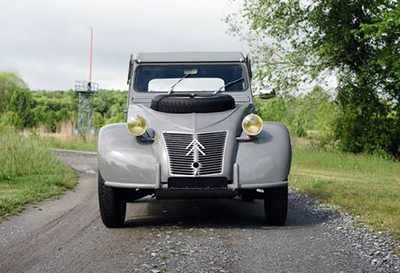
Citroën 2CV Sahara
Dr. Mac Jones, a micro-car collector, located the eBay-listed Sahara in the Netherlands, owned by a former Citroën employee. Jones used it for 14 years on his farm, before it was acquired by the current seller, G&S Motors in North Carolina, who gave it a “sympathetic restoration” with new engine parts and body panels, and a full revamp of the very simple interior. “This is a remarkable survivor, able to be enjoyed on road, off road or in a collection of unique vehicles,” says G&S. It’s very unusual to find a Sahara with its original hood, because most rusted away.
When Citroën launched the Méhari 4×4 in 1979, it was also powered by a two-cylinder, but this time with only one engine.

